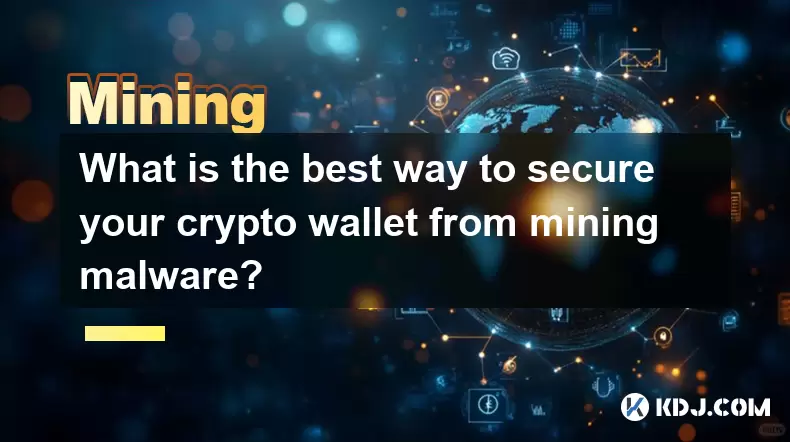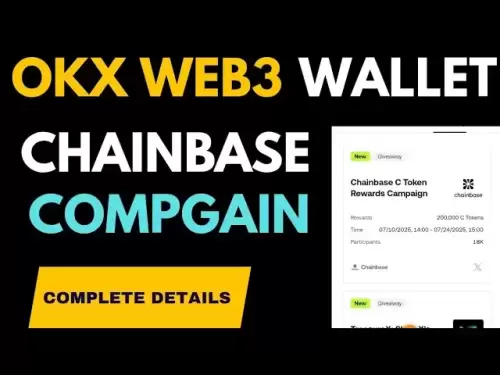-
 Bitcoin
Bitcoin $117,576.6195
-0.21% -
 Ethereum
Ethereum $2,938.5668
-1.35% -
 XRP
XRP $2.7699
4.60% -
 Tether USDt
Tether USDt $1.0003
0.01% -
 BNB
BNB $688.1624
-0.01% -
 Solana
Solana $160.5113
-1.95% -
 USDC
USDC $0.9999
0.01% -
 Dogecoin
Dogecoin $0.1976
-0.70% -
 TRON
TRON $0.3008
1.54% -
 Cardano
Cardano $0.7159
-2.16% -
 Hyperliquid
Hyperliquid $46.2240
2.04% -
 Stellar
Stellar $0.3966
22.03% -
 Sui
Sui $3.3928
-3.11% -
 Chainlink
Chainlink $15.1204
-2.43% -
 Bitcoin Cash
Bitcoin Cash $515.1741
-1.19% -
 Avalanche
Avalanche $20.8130
-0.90% -
 Hedera
Hedera $0.2001
-2.12% -
 UNUS SED LEO
UNUS SED LEO $9.0522
0.72% -
 Shiba Inu
Shiba Inu $0.0...01316
-2.01% -
 Toncoin
Toncoin $2.9843
0.61% -
 Litecoin
Litecoin $92.6745
-2.71% -
 Polkadot
Polkadot $3.9483
-0.06% -
 Monero
Monero $328.5347
1.10% -
 Dai
Dai $0.9998
0.01% -
 Ethena USDe
Ethena USDe $1.0006
-0.01% -
 Uniswap
Uniswap $8.3739
-6.50% -
 Bitget Token
Bitget Token $4.4241
-1.99% -
 Pepe
Pepe $0.0...01222
-3.96% -
 Aave
Aave $300.5203
-3.61% -
 Bittensor
Bittensor $382.2607
-1.92%
What is the best way to secure your crypto wallet from mining malware?
Mining malware exploits devices to mine cryptocurrencies, slowing systems and risking wallet security; protect your crypto by securing your OS, using trusted wallets, deploying anti-malware tools, and monitoring for suspicious activity.
Jul 12, 2025 at 08:49 pm

Understanding the Threat of Mining Malware
Mining malware is a type of malicious software designed to exploit computing resources without the user's consent. Once installed, it uses your device’s processing power to mine cryptocurrencies like Monero or Bitcoin. Crypto wallets are often targeted because they represent high-value assets connected to systems that may be vulnerable. The presence of mining malware can lead to system slowdowns, overheating, and in some cases, unauthorized access to wallet keys.
It's essential to understand how this malware operates, including common infection vectors such as phishing emails, compromised websites, and bundled downloads. Awareness of these entry points helps users implement proactive defenses tailored to their specific usage patterns.
Securing Your Operating System Against Intrusions
The foundation of any secure crypto wallet setup starts with a hardened operating system. A compromised OS opens the door for various threats, including mining malware. To mitigate risks:
- Keep your OS updated with the latest security patches from official sources.
- Use built-in or third-party firewalls to monitor and restrict outgoing and incoming traffic.
- Disable unnecessary background services and ports that could act as attack vectors.
- Install only trusted applications from verified repositories or developers.
Avoid running your wallet on shared or public computers where system integrity cannot be guaranteed. If possible, use a dedicated machine or virtual environment for cryptocurrency-related activities.
Selecting and Configuring a Secure Wallet
Not all wallets offer the same level of protection against external threats. Choosing the right wallet involves evaluating its architecture, update frequency, and community reputation.
- Opt for wallets with open-source code so vulnerabilities can be identified and patched quickly by the community.
- Enable two-factor authentication (2FA) if supported, even if it adds an extra step during access.
- Store private keys offline using hardware wallets whenever possible to reduce exposure to online threats.
- Regularly back up wallet files and store them in multiple secure locations.
Review wallet permissions to ensure it doesn't request excessive system privileges or network access beyond what's necessary for normal operations.
Deploying Antivirus and Anti-Malware Tools
Even with precautions, malware can still find its way onto your system. Deploying robust antivirus and anti-malware tools is crucial for real-time detection and removal of threats.
- Choose reputable security software known for detecting crypto-related malware strains.
- Schedule regular full-system scans to catch hidden threats.
- Enable behavior-based detection features that identify suspicious processes typical of mining scripts.
- Block known mining domains at the DNS level using tools like Pi-hole or OpenDNS.
Ensure your security tools are always updated to include the latest threat definitions. Some advanced tools also offer browser extensions that block malicious scripts on websites.
Monitoring and Responding to Suspicious Activity
Despite best efforts, there may be times when your system behaves unusually. Monitoring performance and logs can help detect mining malware early.
- Check CPU and GPU usage regularly through task manager or monitoring tools. Unusual spikes without apparent cause warrant investigation.
- Review active processes and terminate unknown or suspicious ones.
- Analyze network activity for connections to unfamiliar or blacklisted IP addresses.
- Use endpoint detection and response (EDR) tools to track and analyze potential breaches.
If you suspect infection, disconnect from the internet immediately, perform a deep scan, and consider restoring from a clean backup if needed.
Frequently Asked Questions
Can mining malware steal my cryptocurrency directly?
Yes, while most mining malware focuses on exploiting computational resources, some variants are designed to search for and exfiltrate wallet credentials or private keys stored on infected machines.
Is it safe to use mobile wallets considering the rise of mobile mining apps?
Mobile wallets can be secure if used carefully. Avoid installing apps from unofficial stores, check app permissions before installation, and keep your phone updated. Consider using hardware wallets for larger holdings.
Do browser extensions protect against mining scripts effectively?
Some browser extensions like NoCoin and MinerBlock effectively block known mining scripts. However, they may not cover all threats, especially new or obfuscated variants. Use them alongside other protective measures.
What should I do if I notice high CPU usage but no visible processes?
This could indicate hidden mining malware. Perform a full system scan using updated anti-malware tools, check startup programs, and consider booting into safe mode for deeper inspection.
Disclaimer:info@kdj.com
The information provided is not trading advice. kdj.com does not assume any responsibility for any investments made based on the information provided in this article. Cryptocurrencies are highly volatile and it is highly recommended that you invest with caution after thorough research!
If you believe that the content used on this website infringes your copyright, please contact us immediately (info@kdj.com) and we will delete it promptly.
- Binance, Bloomberg, and a Lawsuit Threat: CZ's Fighting Back!
- 2025-07-13 01:30:12
- Litecoin, BONK, BlockDAG Presale: Navigating the Crypto Frenzy
- 2025-07-13 00:30:12
- BDAG Leads Crypto Trends with $336M Presale: A New Era?
- 2025-07-13 01:30:12
- XRP and Ethereum Whales Stir as Crypto Market Eyes All-Time Highs
- 2025-07-13 02:10:12
- MicroStrategy, Bitcoin, and the Leveraged Proxy: Riding the Crypto Wave
- 2025-07-13 00:50:12
- Trump, Binance, and Crypto Aid: A Tangled Web of Allegations
- 2025-07-13 02:10:12
Related knowledge

How to keep a mining rig cool
Jul 12,2025 at 01:42pm
Understanding the Importance of Cooling in Mining RigsCryptocurrency mining is an intensive process that places heavy demand on hardware components, p...

How much does it cost to start crypto mining?
Jul 13,2025 at 12:22am
Understanding the Basic Costs of Crypto MiningStarting crypto mining involves several upfront and ongoing expenses. The primary costs include hardware...

What do I need to start mining crypto?
Jul 13,2025 at 12:28am
Understanding the Basics of Crypto MiningCrypto mining is the process by which transactions are verified and added to a blockchain, and new coins are ...

How to find the best Dogecoin mining pool for me
Jul 12,2025 at 04:14pm
Understanding the Role of a Mining PoolWhen mining Dogecoin, joining a mining pool can significantly increase your chances of earning consistent rewar...

How to update Dogecoin miner software
Jul 12,2025 at 12:36pm
Understanding Dogecoin Mining and the Need for Software UpdatesDogecoin mining involves using specialized software to validate transactions on the Dog...

Overclocking settings for Dogecoin mining
Jul 12,2025 at 12:57pm
Understanding Overclocking in Dogecoin MiningOverclocking refers to the process of increasing the clock rate of a component—typically a GPU or CPU—bey...

How to keep a mining rig cool
Jul 12,2025 at 01:42pm
Understanding the Importance of Cooling in Mining RigsCryptocurrency mining is an intensive process that places heavy demand on hardware components, p...

How much does it cost to start crypto mining?
Jul 13,2025 at 12:22am
Understanding the Basic Costs of Crypto MiningStarting crypto mining involves several upfront and ongoing expenses. The primary costs include hardware...

What do I need to start mining crypto?
Jul 13,2025 at 12:28am
Understanding the Basics of Crypto MiningCrypto mining is the process by which transactions are verified and added to a blockchain, and new coins are ...

How to find the best Dogecoin mining pool for me
Jul 12,2025 at 04:14pm
Understanding the Role of a Mining PoolWhen mining Dogecoin, joining a mining pool can significantly increase your chances of earning consistent rewar...

How to update Dogecoin miner software
Jul 12,2025 at 12:36pm
Understanding Dogecoin Mining and the Need for Software UpdatesDogecoin mining involves using specialized software to validate transactions on the Dog...

Overclocking settings for Dogecoin mining
Jul 12,2025 at 12:57pm
Understanding Overclocking in Dogecoin MiningOverclocking refers to the process of increasing the clock rate of a component—typically a GPU or CPU—bey...
See all articles

























































































